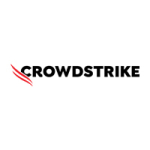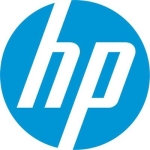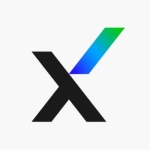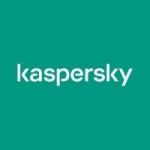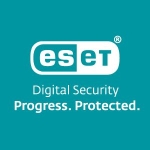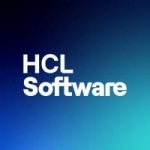What is our primary use case?
My primary use case is malware protection. I also use it for device control, application control, and more. We are a financial institution.
How has it helped my organization?
The stability of this product has improved the way our organization functions. There is little maintenance, and it doesn't take long to install or uninstall. Once it is configured correctly, there is little chance of it failing.
This means that we have more of our technical staff available to work on other problems that occur.
What is most valuable?
The most valuable feature is the proactive malware scanning capability.
When you are performing simple tasks, it is not as demanding on resources as compared to other security products. This is an aspect that I like.
The application and device control functionality is good. We are able to see which applications are installed using the product management dashboard. This gives us the ability to monitor workstations, including which applications they have in which tabs.
There are extensions available, such as the Browser extension, to deal with specific types of attacks. This helps to protect against hackers. I have tested it with samples and it protects the system well.
The interface is simple to use.
What needs improvement?
One issue that comes to mind is that there is no way of specifying categories that the firewall should block. It is able to block specific URLs but other solutions, such as Kaspersky, allow you to block access by specifying a category.
It would be helpful if this product provided patch management functionality.
Compared to Kaspersky, the reporting features are not rich. Overall, the reporting capability needs to be improved.
For how long have I used the solution?
I have been working with Symantec Endpoint Security for between 12 and 18 months.
What do I think about the stability of the solution?
This is a very stable product. It is the feature that I like most about the product because when we were using other ones, we had failures. With this solution, there is no frequent failure of the components.
For example, in other products that we've used, the virus definitions didn't update and systems were compromised because of it.
What do I think about the scalability of the solution?
We have approximately 3,000 users that are protected by this solution. We add branches and more computers weekly, and we don't have problems doing so.
We were able to easily integrate with Active Directory using the Symantec Manager, so I would say it's very scalable.
As we add more branches, our usage of the product will continue to increase.
How are customer service and support?
We have not been in direct contact with Symantec technical support.
The training and documentation that they provide are helpful. There is a good amount of documentation that helped to provide us with a complete picture of the product. It's nice, neat, and easy to understand.
Which solution did I use previously and why did I switch?
Prior to Symantec, we used a solution by Kaspersky.
We use other anti-virus products and this one is less resource intensive and more stable than the others. It is also simpler to use.
Symantec Web Security Service (WSS) has some good features that I wish were in this product. Unfortunately, it is another subscription.
How was the initial setup?
It does not take long to install this solution.
Unfortunately, the order that we followed was not recommended. We just deployed and then obtained subscriptions after that. This is not a recommended approach for deployment. However, we have a good partner and a good support team.
Due to our limited bandwidth, we had to install manually rather than use the web-based deployment. This meant that it took us longer because we had to visit each of the physical workstations. In total, it took approximately two months to deploy.
What about the implementation team?
We deployed the solution ourselves. There were seven or eight people io the team and different staff members were given different duties. All of them are system administrators.
We have three people that handle the maintenance. They monitor the dashboard for possible compromises, and our specialists have to use the device protection and application controls.
There are also tasks related to reporting issues that arise during monitoring, including those concerning possible attacks or infections. One of the managers in our IT staff is responsible for updating the definitions that we get from Symantec.
There was an incident where we had problems with a password and we had difficulty recovering it. We contacted our local partner and I think they contacted Symantec. After that, we recovered the password. That was the only maintenance-related problem that we had.
What's my experience with pricing, setup cost, and licensing?
The pricing was one of the factors that led us to choose this product.
That said, I was not the decision maker. I simply proposed it to our manager.
Which other solutions did I evaluate?
When our subscription to Kaspersky ended, we were tasked with comparing features between different solutions. The three options we considered were Symantec, Kaspersky, and Sophos.
One of the things that we liked about Symantec is the low resource utilization. I am not the person who completed the analysis but I know that the fact it is lightweight was one factor.
We liked the functionality that Sophos provided but the deployment scenario functionality was not useful for the workstations in our environment. It involved deploying the dashboard to workstations in the cloud, which is not our preferred approach.
Kaspersky has richer reporting capabilities. This is an area that could be enhanced in our Symantec solution.
What other advice do I have?
We deployed the product one and a half years ago, and we received training to configure and maintain it. It was recommended that we complete our training in terms of policies, which is something that we also did. Once that was finished, we experienced the stability and good features that the product provides.
This is a product that I have recommended for use in another company. I have been told that after they adopted it, they were pleased with the fact it consumes fewer resources than their previous solutions. They manage it from the cloud.
Currently, I am referring another company to this product and my understanding is that they're going to implement it.
I would rate this solution an eight out of ten.
Which deployment model are you using for this solution?
On-premises
Disclosure: My company does not have a business relationship with this vendor other than being a customer.





